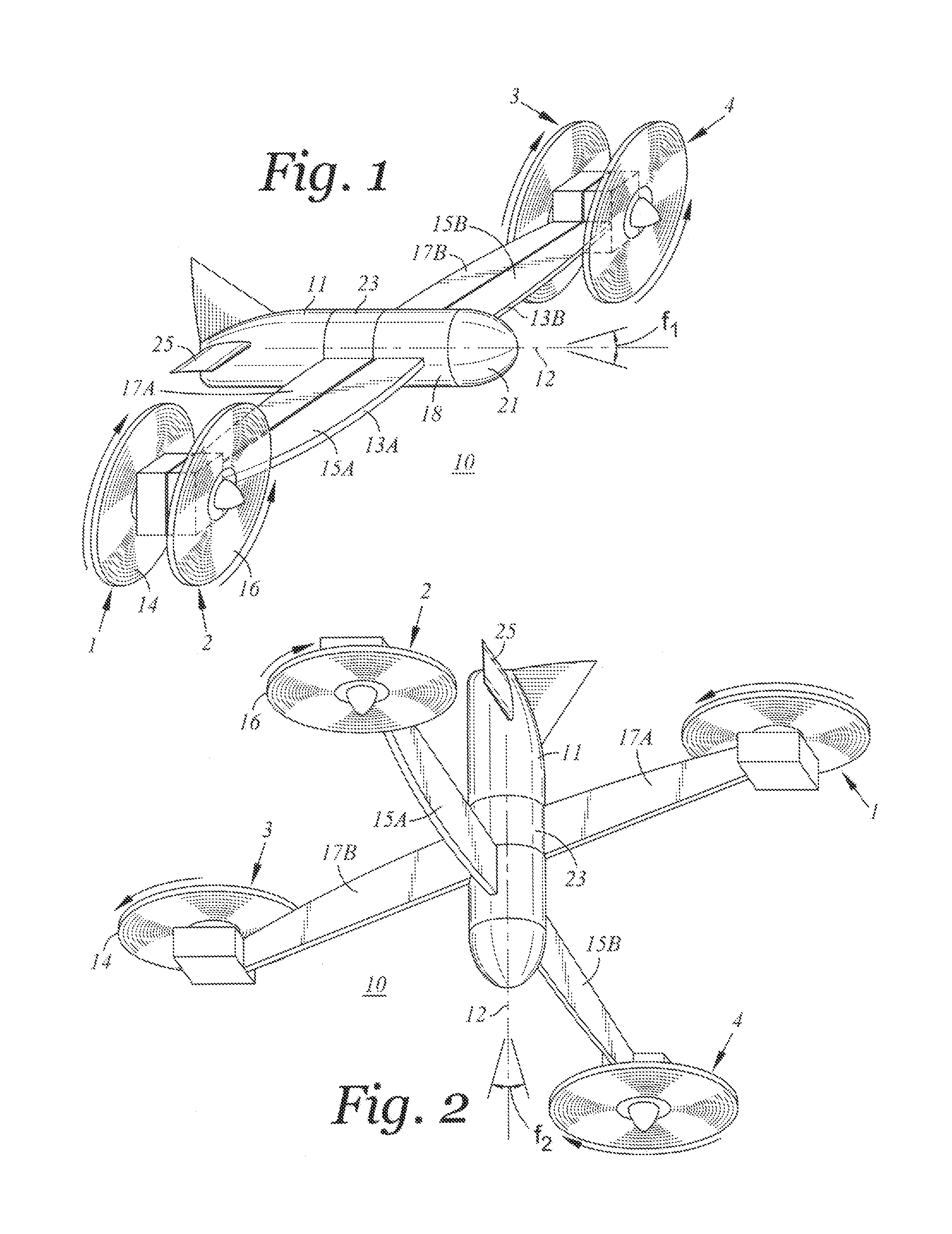Tilt Wing Aerial Vehicle
a technology of tilting wing and aerial vehicle, which is applied in the field of tilting wing aerial vehicle, can solve the problems of increasing complexity, complexity and weight of payload, increasing complexity and weight, and increasing complexity and weight. the effect of wing segment translation
- Summary
- Abstract
- Description
- Claims
- Application Information
AI Technical Summary
Benefits of technology
Problems solved by technology
Method used
Image
Examples
Embodiment Construction
[0028]FIG. 1 illustrates one embodiment of a multi-engine aircraft that is convertible from a horizontal flight mode to a vertical flight mode in accordance with the present invention. As shown therein aircraft 10 includes an aircraft fuselage 11 and a pair of wings 13A, 13B. Each wing is formed of two separable portions, as described in more detail below. Wing 13A is formed to include wing segments 15A, 17A. Wing 13B is formed to include wing segments 15B, 17B. In the horizontal flight mode wing segment 15B is adjacent to and substantially is coplanar with wing segment 17B, and wing segment 15A is adjacent to and substantially coplanar with wing segment 17A. An aircraft propulsion unit is attached to each of the wing segments. Propulsion unit 1 is attached to wing segment 17A and propulsion unit 2 is attached to wing segment 15A. Propulsion unit 3 is attached to wing segment 17B and propulsion unit 4 is attached to wing segment 15B. Propulsion units 1 and 2 are in substantial axial...
PUM
 Login to View More
Login to View More Abstract
Description
Claims
Application Information
 Login to View More
Login to View More - R&D
- Intellectual Property
- Life Sciences
- Materials
- Tech Scout
- Unparalleled Data Quality
- Higher Quality Content
- 60% Fewer Hallucinations
Browse by: Latest US Patents, China's latest patents, Technical Efficacy Thesaurus, Application Domain, Technology Topic, Popular Technical Reports.
© 2025 PatSnap. All rights reserved.Legal|Privacy policy|Modern Slavery Act Transparency Statement|Sitemap|About US| Contact US: help@patsnap.com



